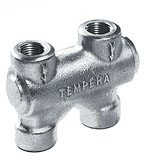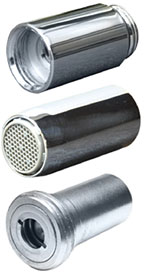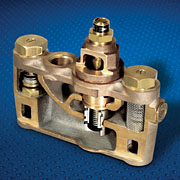
Boilers and water heaters produce hot water and their performance requirements are covered by various national standards. These hot water-producing systems are for the production of hot water but not the final control of the hot water as it is used in plumbing systems. The control of the hot water after it leaves its source must be accomplished by additional control devices.
There are generally two control issues with the hot water systems. The first is high-limit temperature control, and the second is pressure control. The danger when high temperatures are not controlled is scalding, and the danger when pressure is not controlled is a rapid change in mixed water temperature at outlets such as showers that can cause thermal shock. Scalding often results in third-degree burns and scarring. Thermal shock often results in injuries from slips and falls as the bather tries to move away from a sudden temperature change.
The areas of concern in plumbing systems are the delivery points of hot water to tubs, showers, sinks and numerous other fixtures in commercial and institutional settings. The concerns are for both newly designed systems and retrofitting existing systems. With the variety of designs that are possible for hot water systems, there needs to be a variety of plumbing devices to provide the necessary hot water control.
The American Society of Sanitary Engineering (ASSE) is the standards writing organization that has published the performance standards for these hot water control devices. It all began over 30 years ago with the development and publication in 1973 of ASSE Standard 1016, first titled, "Individual Shower Control Valves Anti-scald Type." It was the first of this type of product performance standard for the plumbing industry. A full understanding of the ASSE series of temperature control standards is required for the system designer to provide the proper degree of scald and/or thermal shock protection in a system. ASSE is the ANSI-accredited standards developer in the United States for these types of safety devices. All of the published ASSE standards for devices that control hot water are referenced in all the model plumbing codes. ASSE is in the process of developing several additional product standards to afford even more design flexibility in plumbing systems while still providing the necessary hot water control.
Starting chronologically, the family of hot water control standards is as follows:




